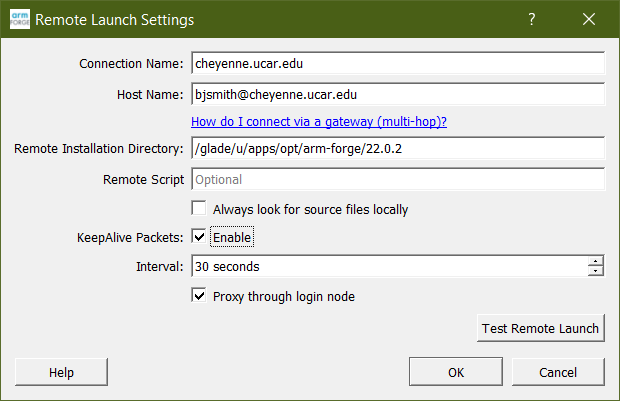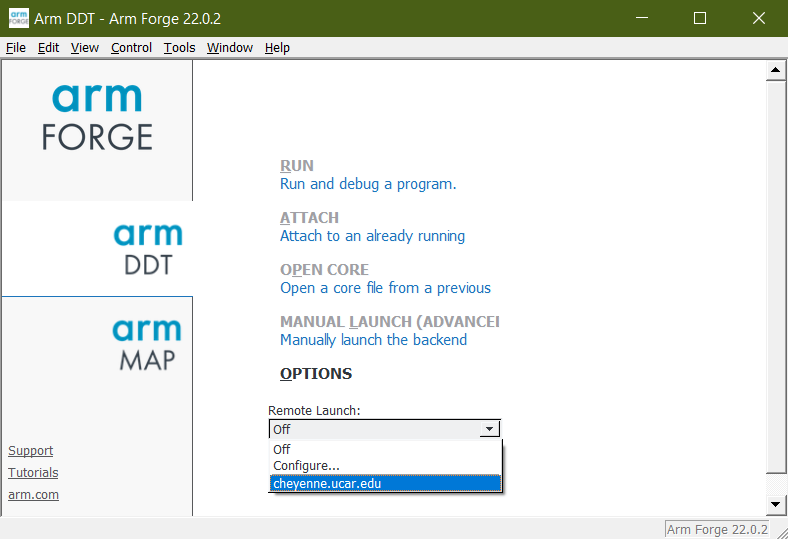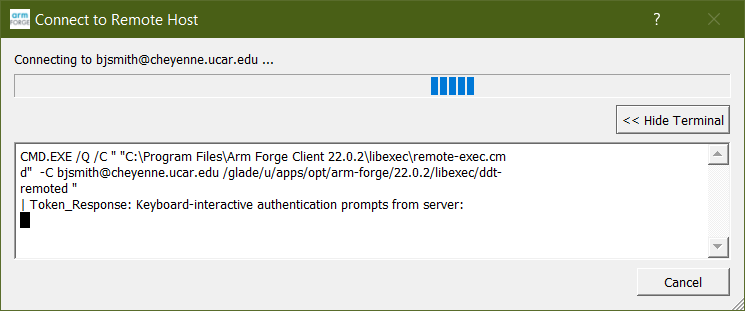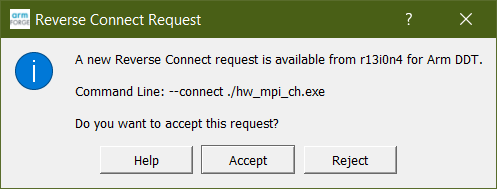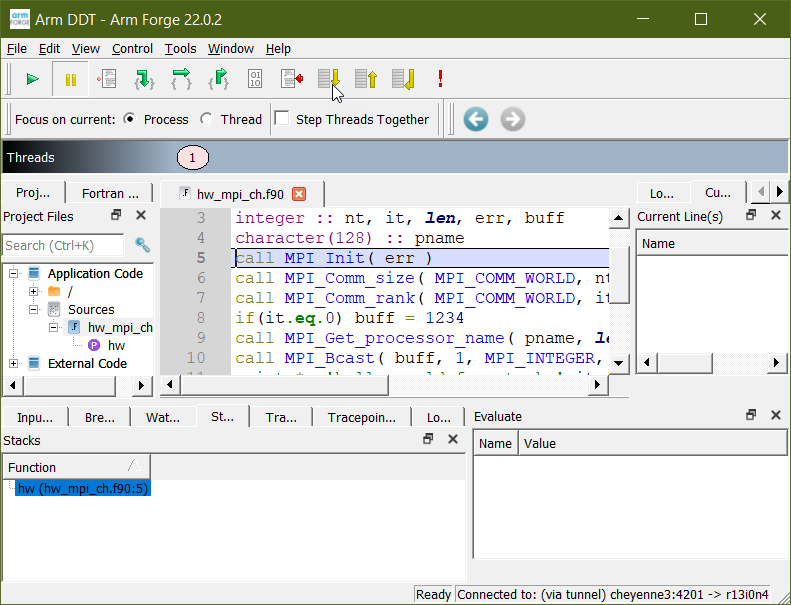Documentation
Running DDT, MAP and PR jobs on Cheyenne
Created by Unknown User (bjsmith), last modified on 2022-12-01The Arm Forge tools, DDT and MAP, are installed on Cheyenne for debugging, profiling, and optimizing code.
Follow the procedures below to configure the DDT and MAP client interface on your local machine and then start your debugging and profiling jobs. We recommend using the client software to get the best performance, but the tools also run from the Cheyenne command line interface.
Performance Reports is another Arm tool for Cheyenne users. It summarizes the performance of HPC application runs. Get details and a sample batch script for generating reports below.
Arm Forge was formerly known as Allinea Forge, and "allinea" remains in use in some cases.
Page contents
Preparing your code
Include the -g option when you compile your code for debugging with DDT or profiling with MAP. See our Compiling code documentation for the compilation commands to use.
Do not move or remove the source code, binary, or executable files from the directory or directories in which you compiled them.
Review the following Cheyenne-specific documentation and the Arm Forge User Guide.
Client interface setup
The client software version that you use locally and the server version that you use on Cheyenne must be the same. We recommend using the latest version that is available on Cheyenne. Run module av arm-forge to identify the latest version.
Procedure
Download the client software from the Arm site.
Install and start the client on your local machine.
From the “Remote Launch” menu (see image), select Configure.
Configure as shown in the following image. The configuration will apply to both DDT and MAP, so you only need to do it once.
Enter your username followed by @ and the connection name (cheyenne.ucar.edu) in the “Host Name” field.
Then, fill in the “Remote Installation Directory” field. You can copy the text from here and change the version number to match the version you are using:
/glade/u/apps/opt/arm-forge/22.0.2
Leave the "Remote Script" field blank.
Click OK.
Running DDT and MAP
Prepare a job script. Specify the regular queue and customize the script with your own project code, job name, and so on.
On the last line of your script, replace mpiexec_mpt with ddt --connect (or map --connect).
ddt --connect ./myjob_f
Submit your job when indicated below.
Procedure
Start the client interface on your local machine.
From the “Remote Launch” menu, select your personal host name.
When the following dialog box appears, authenticate as usual. (It may be necessary to click Show Terminal to see the authentication window.)
After logging in, return to your normal terminal window and load the modules that you need. (We recommend including the module load commands in your job script.)
module load arm-forge/22.0.2
Submit your job script on your command line.
qsub myscript.bash
When your job starts, the Forge GUI will show that a “Reverse Connect Request” has been made. Accept the request to continue.
A “Run” window will open, displaying settings imported from your job script. Review the settings. If your program uses MPT, specify the MPI implementation as HPE MPT 2.18+. (See Run window.)
Click Run.
The DDT (or MAP) window will open.
Quit when you’re finished so the license is available to other users.
Performance Reports
To generate a report on the performance of your program, submit a batch job to run it. You do not need to compile it with the -g debug option first.
Modify your batch script to load the arm-forge module that you want to use and include perf-report as shown in the sample scripts below.
When your job runs, the output will include both text and HTML report files.
See the Arm product documentation for additional information.
Sample bash script
#!/bin/bash #PBS -N prjob #PBS -A project_code #PBS -l walltime=01:00:00 #PBS -q regular #PBS -j oe #PBS -k eod #PBS -l select=2:ncpus=36:mpiprocs=36 #PBS -m abe #PBS -M email_address module load arm-forge/22.0.2 export MPI_SHEPHERD=true export MPI_INIT_LATE=false export TMPDIR=/glade/scratch/$USER/temp mkdir -p $TMPDIR ### Run the executable perf-report --mpi -n 72 ./executable_name.exe
Sample tcsh script
#!/bin/tcsh #PBS -N prjob #PBS -A project_code #PBS -l walltime=01:00:00 #PBS -q regular #PBS -j oe #PBS -k eod #PBS -l select=2:ncpus=36:mpiprocs=36 #PBS -m abe #PBS -M email_address module load arm-forge/22.0.2 setenv MPI_SHEPHERD true setenv MPI_INIT_LATE false setenv TMPDIR /glade/scratch/$USER/temp mkdir -p $TMPDIR ### Run the executable perf-report --mpi -n 72 ./executable_name.exe

